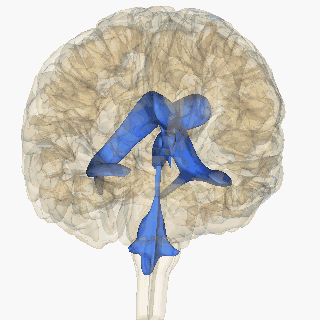
Diet
So Many Brain Cells, So Many Ways to Control Body Weight
Even cells in walls of brain's ventricular system play role in body weight.
Posted January 14, 2014
My calendar says it is mid-January. My newsfeed agrees, saying that people are still working on New Year’s resolutions such as losing weight.
In my last post, I wrote about the role of the brain’s decision-making systems in weight loss. The neurobiology underlying body weight is complex and not anywhere near completely understood. To illustrate this point, I am writing about how the ventricular system is involved in controlling body weight.
Yes, the ventricular system – the fluid filled cavities and canals running the length of the spinal cord and enveloping the brain.
The ventricle system might seem boring, but to me its complexity embodies just how much more there is to learn.
Centuries ago, when Leonardo da Vinci and René Descartes studied the brain, they focused on the ventricles. Though their ideas have since been proven incorrect – da Vinci mapped different behaviors and emotions to ventricular regions while Descartes posited the ventricles were filled with psychic “spirits” – they were astute in assigning importance to the ventricular system.
The ventricular system protects the brain and spinal cord from bumping into the skull and vertebrae, respectively, by literally floating them in cerebral spinal fluid (CSF). The lining of the ventricles, called the ependyma, makes and absorbs CSF.

The brain's ventricular system: protector, nourisher, body weight regulator?
But the ventricular lining does much more than just manufacture and recycle the fluid that protects and nourishes the central nervous system.
The lining also contains stem cells that can regenerate themselves and/or develop into other kinds of cells. Recent research has shown that certain parts of ventricular walls contain cells that even contribute to body weight regulation.
That’s right; cells in your ventricle walls help determine what the scale says.
Called tanycytes, these cells are located within the walls of the third ventricle and nearby the brain’s body weight controller, the hypothalamus.
A review article reprinted in the current issue of Trends in Neurosciences summarizes tanycyte function as “an almost puzzling diversity of potential roles” but concludes that tanycytes likely play a widespread and important role in hypothalamic function and therefore control of body weight.
Brain networks involving the hypothalamus oversee the body’s “energy balance.” Energy balance is the difference between energy intake (calories eaten) and energy output (metabolism, fat stores, movement, to name a few). Hypothalamic networks control your appetite, how you metabolize food, and where your body deposits fat stores. Energy balance computations require the hypothalamus to monitor amounts of food byproducts such as glucose, fats, and amino acids, while also tracking hormone levels related to digestion.
Tanycyte cells are just one part of a hypothalamic network, and they are cellular jacks-of-all-trades. They are chemosensors, detecting glucose levels in CSF.
In response to diet changes, tanycytes expresses genes known to be important for changes in body weight. They are also stem cells that likely grow into new hypothalamic cells. The physical shape and close proximity to hypothalamus neurons suggest that tanycytes are a source of information the hypothalamus uses to control body weight.
Understanding exactly how hypothalamic networks – including those involving tanycytes – control body weight is still an active area of research and hopefully will contribute novel treatments for obesity.

